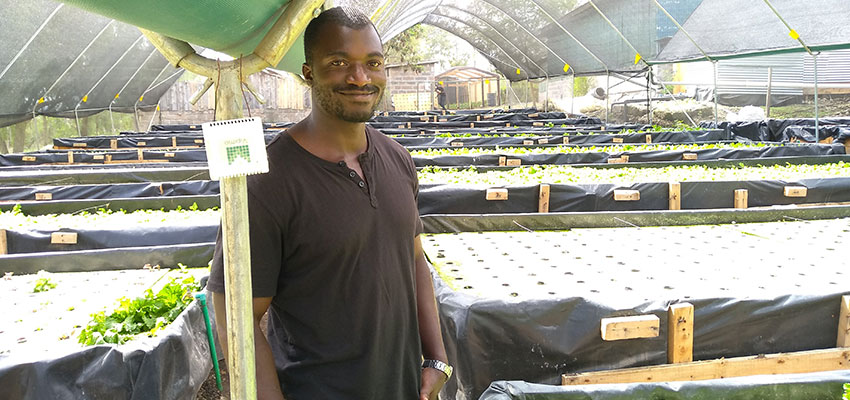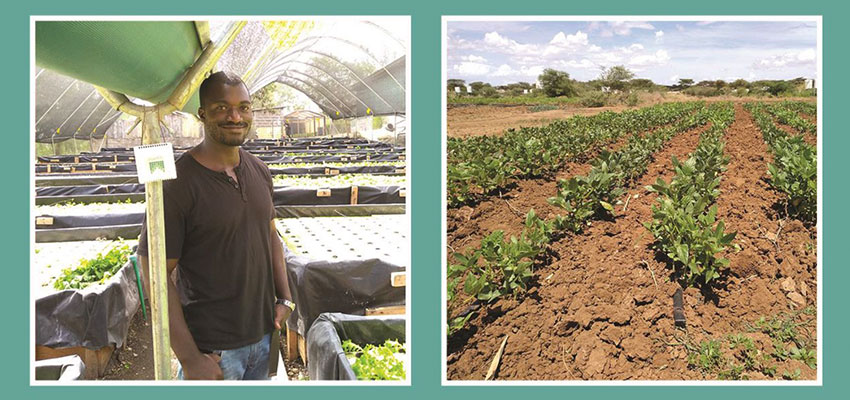
Smallholder farmers, critical to the global food supply, face growing challenges
Approximately 500 million small and family farms contribute 80% of the global food supply [1, 2]. Despite our global reliance on them, small farmers face many hurdles including increasing climate variability, inability to rely on generational knowledge, and pressures on farmland from urbanization. Furthermore, to feed a population that is expected to exceed nine billion by 2050, food production will need to increase by 60% from business-as-usual growth rates [3].
Emergence of precision agriculture and IoT devices
Precision agriculture augments a farmer’s decision-making ability by integrating advances in our understanding of crop growth, sensor technology and wireless connectivity. This requires a suite of internet of things (IoT) devices installed in fields, irrigation systems, livestock and cultivating equipment to monitor soil, crop, water, assets and local climate conditions [4].
For smallholder farmers, however, access to these services is nearly non-existent due to gaps in their supporting ecosystems, their inability to invest in farm improvements, and a lack of evidence that IoT services can be sustainably implemented in smallholder agriculture.
Investigating the challenges and opportunities for IoT in smallholder agriculture
In order to facilitate the potential expansion of IoT technology and services to smallholder farmers, this research investigated challenges and opportunities with emphasis on sensor technology, implementation, and analysis and decision support in Global Food Security Strategy countries.
Through literature review, key stakeholder interviews, sector surveys, and site visits, we have compiled a landscape analysis of the IoT for agriculture sector and documented several IoT implementations in India and Kenya. This analysis addresses the following research questions:
- What is the current state of technology in agricultural sensors suitable for low-resource settings?
- What are the challenges to entry for low-cost sensors?
- What types of sensors are best suited for small-scale farmers?
- What are the research needs and potential directions of technology development over the next five years?
- How critical are concerns about equity of access, data privacy/security, and digital literacy?
Selected findings and recommendations
- Cost and access driving innovation: A vast catalog of sensor and communication technology exists covering a broad range of applications. However, many off-the-shelf IoT solutions are either not available in developing countries, or not cost-effective for the smallholder context. From our in-depth research in Kenya, we found several private companies and university groups developing homegrown IoT solutions tailored for smallholder farms.
- Ecosystem: Ecosystems of partners is a common in successful IoT for agriculture implementations. Farmers are an obvious component, but implementing organizations cannot rely on most farmers to understand, purchase and adopt IoT solutions. Farmer advisory and ag extension can help to interpret information and support on device maintenance and diagnostics.
- Horizontally-oriented: In the absence of an ecosystem, technology developers tend to vertically orient and take on a variety of roles including device development, farmer recruitment, data collection and analytics, and advice to farmers. Projects with more horizontal integration of different organizations could be eligible for funding opportunities such as USAID Broad Agency Announcements.
- Sector support and funding: A common challenge is finding committed project partners and funding to support the activities over a duration long enough to see results. We recommend that an IoT for smallholder agriculture forum be established, funders supporting projects for at least five years to build sufficient evidence on the efficacy of the intervention, and hands-on IoT training opportunities be supported to prepare students for careers in this sector.
Download the full report
Seeds of Silicon: Internet of Things for Smallholder Agriculture (3.11 MB)
MIT D-Lab CITE 2019 Ag IoT Summary Data
Webinar
Seeds of Silicon: How the Internet of Things (IoT) Can Transform Smallholder Agriculture - December 4, 2019 (YouTube, one hour)
Get involved
- Join the D-Lab IoT for Ag mailing list
- Join our IoT4Ag Telegram group
- Join the discussion at the Gathering of Open Ag Technology
- Email us
References
[1] FAO (2014), “The state of food and agriculture: Innovation in family farming,” Rome
[2] Graeub et al (2016), “The State of Family Farms in the World,” World Development, Volume 87, pg. 1-15, https://doi.org/10.1016/j.worlddev.2015.05.012.
[3] Searchinger et al. (2018), Creating a Sustainable Food Future: A Menu of Solutions to Feed Nearly 10 Billion People by 2050 (Synthesis Report),” World Resources Institute, ISBN 978-1-56973-953-6, https://www.wri.org/publication/creating-sustainable-food-future
[4] Blackmore, S. (1994), “Precision farming: an introduction,” Outlook on Agriculture Journal, Vol. 23, pp. 275-280.






